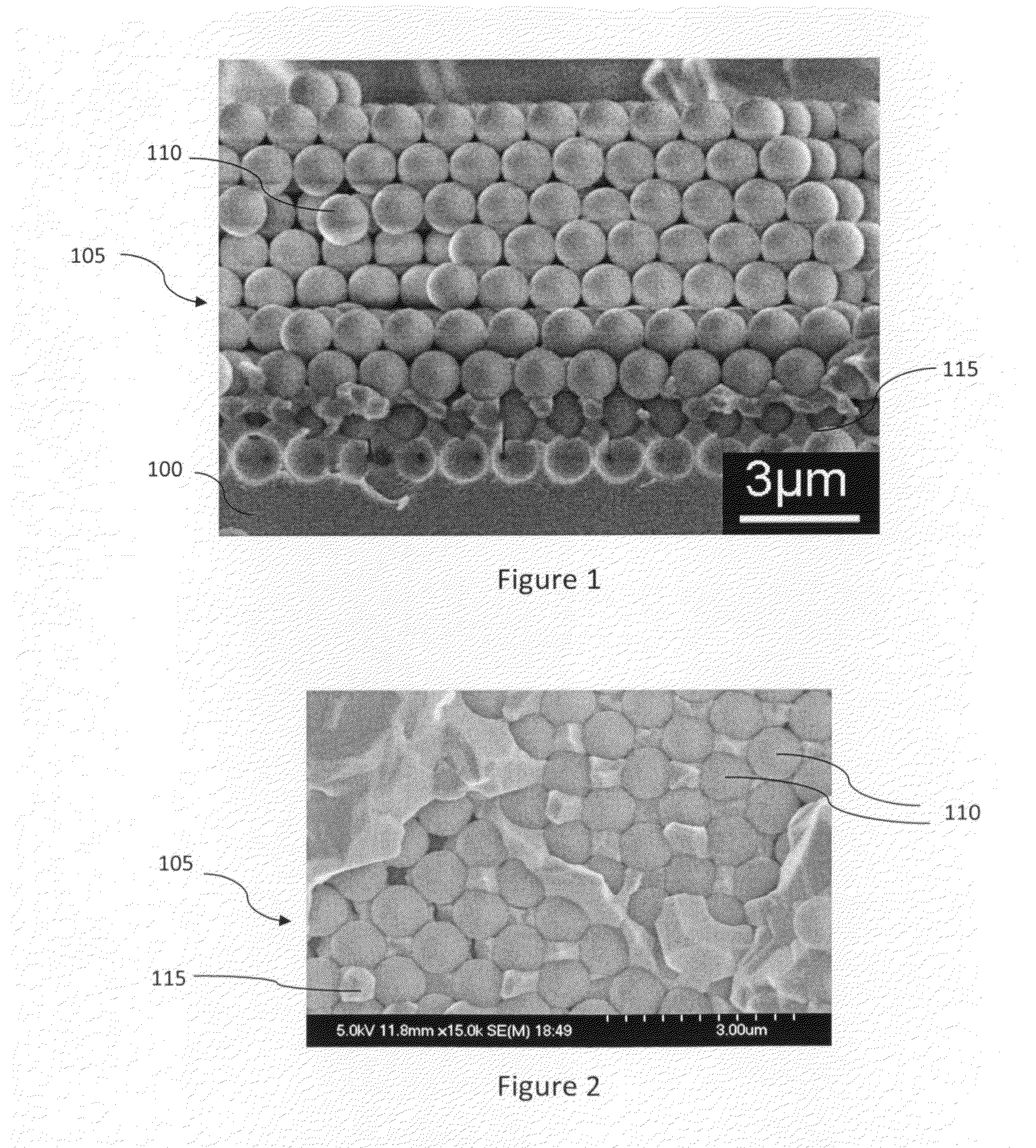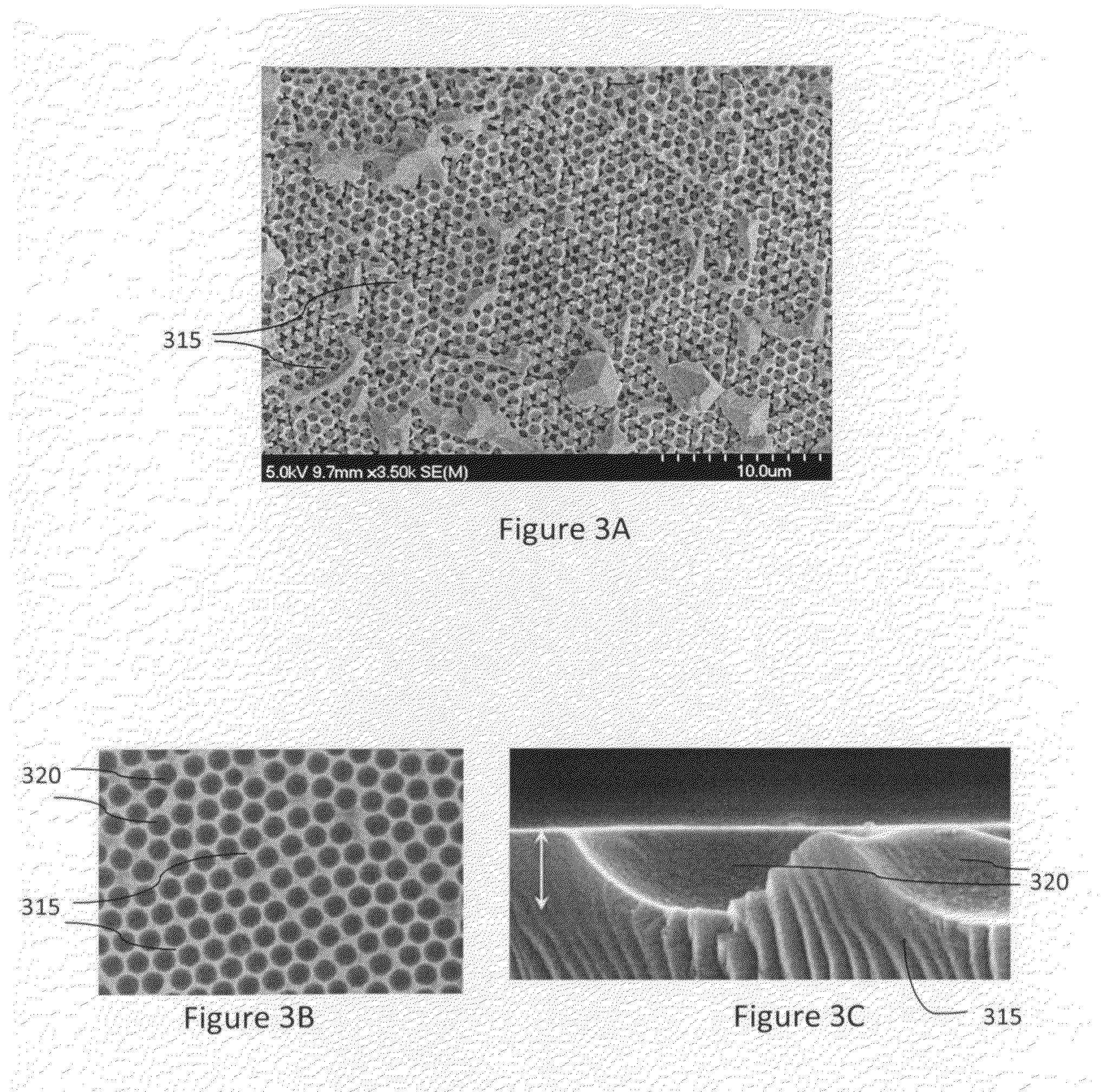Porous device for optical and electronic applications and method of fabricating the porous device
a technology of optical and electronic applications and porous devices, applied in the field of porous single crystal structure, can solve the problems of amorphous or polycrystalline materials with poor electronic properties, the difficulty of fabricating 3d photonic crystals with complete or near complete photonic band gaps and the required electronic properties, and the inability to realize ideas, etc., to achieve the effect of improving the efficiency of existing optical and electronic devices, ensuring advantageous electrical properties, and substantial
- Summary
- Abstract
- Description
- Claims
- Application Information
AI Technical Summary
Benefits of technology
Problems solved by technology
Method used
Image
Examples
Embodiment Construction
[0023]Described herein is a new approach for fabricating single crystal, three-dimensional (3D) porous structures for photonic and optoelectronic applications based on the selective area epitaxy of materials such as III-V semiconductors. The approach allows epitaxial growth of the single crystal structures through three-dimensional scaffolds or templates to produce high-quality optical and electronic devices.
[0024]The fabrication method involves forming a three-dimensional scaffold on a single crystal substrate. The scaffold typically has characteristic dimensions ranging from tens of nanometers to a few microns. The terms template and scaffold are used interchangeably throughout this disclosure in reference to the framework of interconnected elements employed to direct growth of the 3D single crystal structure on the substrate. The scaffold, which is typically formed of an insulating material, is constructed on the single crystal substrate by colloidal assembly, lithography, or ano...
PUM
| Property | Measurement | Unit |
|---|---|---|
| thickness | aaaaa | aaaaa |
| temperature | aaaaa | aaaaa |
| temperature | aaaaa | aaaaa |
Abstract
Description
Claims
Application Information
 Login to View More
Login to View More - R&D
- Intellectual Property
- Life Sciences
- Materials
- Tech Scout
- Unparalleled Data Quality
- Higher Quality Content
- 60% Fewer Hallucinations
Browse by: Latest US Patents, China's latest patents, Technical Efficacy Thesaurus, Application Domain, Technology Topic, Popular Technical Reports.
© 2025 PatSnap. All rights reserved.Legal|Privacy policy|Modern Slavery Act Transparency Statement|Sitemap|About US| Contact US: help@patsnap.com



